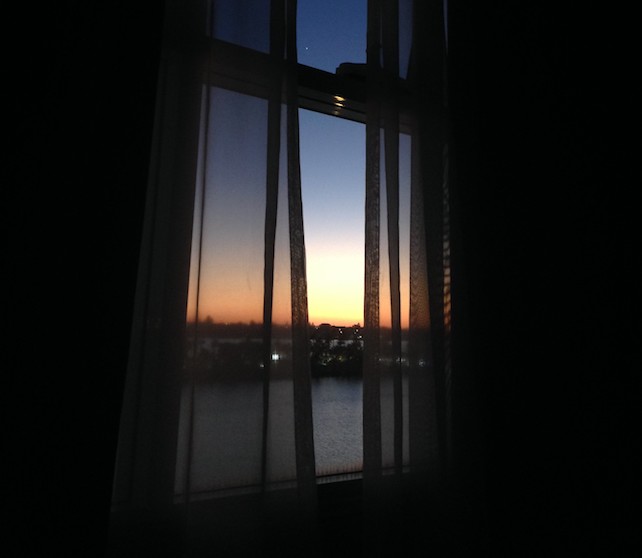If you often feel exhausted in the morning, you might be one of the millions worldwide experiencing chronic sleep deprivation.
A new study highlights something that could add extra pep to your morning: 20 minutes of sunlight exposure before you wake up.
We know the effects of inadequate sleep can be dangerous. But simply getting more isn't always feasible – nor is it a panacea. Many people still experience morning fatigue even after a full night of sleep.
Exercise can help, as can limiting food and alcohol before bed. And researchers at Osaka Metropolitan University in Japan say pre-waking sunlight could be effective too.
Previous research shows exposure to artificial light before waking might reduce morning fatigue by simulating the natural signal of sunrise. But it's not simple to distribute artificial light the same way a sunrise illuminates Earth's surface.
"Dawn simulation typically consists of small light sources placed on a bedside table, with a relatively low position (usually at the eye level of the user) and strongly directional light," the authors of the new paper write.
"Any involuntary movement of the user, such as turning over or shifting positions in bed, may lead to fluctuations in light exposure during sleep, potentially causing instability."
There may be ways to prevent those issues, such as mounting a dawn simulator to the ceiling. But it's worth noting that – in most areas – the actual dawn occurs outside every morning, providing a non-simulated service for free.

If you live somewhere unplagued by light pollution, it could work to leave your curtains or blinds open at night, blissfully basking in darkness until dawn.
Not everyone has that option, due to the ubiquity of outdoor artificial lights. Some people address this with devices like motorized curtains that can block light at night and reopen at a set time each morning.
So the researchers wanted to test the efficacy of this approach.
They used a crossover randomized controlled trial, a study design in which each subject receives each of multiple interventions in a sequence of experiments, allowing them to serve as their own control.
The 'crossover' comparison of participants to themselves helps minimize the influence from individual differences in factors like health, age, or genetics. This increases the statistical accuracy of the results, which means fewer participants are required to yield meaningful insight.
The authors recruited 19 university students, between 20 and 30 years old, who reported regularly going to bed on weekdays between 11 pm and 1 am and waking between 7 and 9 am.
Subjects slept in a university lab furnished like a bedroom. All windows were shaded except for one facing east, making it the only source of natural light.
The researchers installed light-shielding curtains on the east-facing window, plus a motorized device they could set to open the curtains at a specific time each morning, slowly pulling them back at a rate of 5 millimeters (0.2 inches) per second.
They used this setup to create three scenarios for participants: natural light exposure for 20 minutes before waking, natural light exposure from dawn until waking, and no natural light exposure.
After subjects awoke in each scenario, researchers assessed their sleepiness, alertness, and fatigue.
Objective alertness (measured by electrocardiogram) and self-reported sleepiness were significantly better in the two scenarios with natural light exposure compared to with no natural light exposure.
But the timing and dosage of that light seem important. Objective sleepiness measured via brain activity on electroencephalogram was significantly lower after natural light exposure for 20 minutes before waking, compared to both other scenarios.
Exposure to natural light from dawn until waking may offer too much sunlight too soon, the team suggests, potentially disrupting sleep.
New research can build upon these findings, exploring in more detail the best ways to fight sleepiness with sunlight, says Daisuke Matsushita, a living environment design scientist at Osaka Metropolitan University.
"In the future, we hope to control natural light in the sleep environment as it changes with the seasons and time of day, and to clarify how to introduce natural light that is suitable for a more comfortable awakening," he explains.
The study was published in Building and Environment.